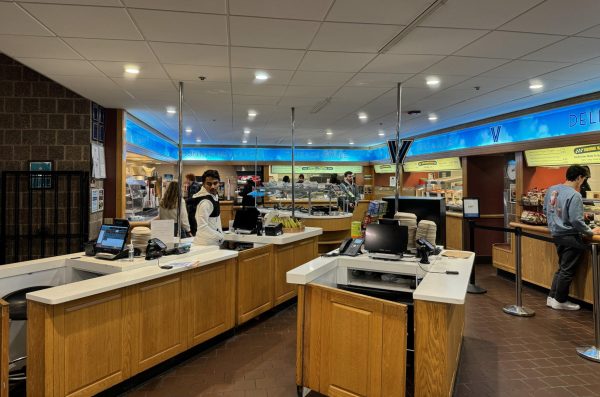Villanova’s Tendency To Be Trendy, But At What Cost?
November 17, 2021
Fashion trends have always been a part of American culture, whether that is the classic 70s tie-dye pattern or the 90s grunge look. But recently, fashion trends have been pretty nostalgic, especially with this winter’s return of Ugg Boots. TikTok and social media have exacerbated the trend cycle, with fads quickly spreading through the world, and subsequently corporations capitalizing on this.
Fashion fads are a fun way to participate in internet culture and bond with others who also choose to take part in the trends. However, the constant push to dress “trendy” can often lead to feelings of inadequacy, especially if someone cannot afford or does not want to buy new clothes and accessories every month. At Villanova, despite being a campus where individual styles vary, it is hard not to take part in this trend culture despite some of the negative side effects.
Trends have always been inevitable with the changes in culture and American life, with social media certainly expediting the trend cycle speed. With checkered patterns and fuzzy purses, the Y2K fashion style was all the rage last year. Yet only a year later, these are left behind, and “Shackets” (a top that doubles as a shirt or jacket) and chunky boots are now the hot items.
There is no fault in the evolution of fashion. However, it becomes a problem when the old once-trendy items end up in the landfill. A good option for unwanted clothes is donating to Goodwill or other similar organizations. However, it is worth noting that some clothes that go unsold at their stores get recycled into other types of textiles or still end up in the trash. Unfortunately, the global fashion industry is one of the largest contributors to climate change, and the constant need for corporations to keep up with the demand for new styles negatively contributes to the problem.
Many fast-fashion brands on Amazon have capitalized on this trend cycle, as the inexpensive nature of their clothes contributes directly to the problem. They realize that consumers are not spending a ton of money on items that they know will soon go out of style, so Amazon or other similar retailers are the perfect markets for these types of clothes.
One way to combat the negative environmental impact of fast fads is to thrift or shop at vintage stores. Luckily, there have been a lot of fashion styles repeating themselves, like leather jackets or classic jeans. Finding these at thrift stores not only makes one’s style more unique, but it is also better for the environment to reuse these articles of clothing. Recently, Villanova students organized the “Wildcat Thrift” event, where students could buy and sell clothing looking for a new home.
It is so easy to get caught up in the idea that dressing in the most popular items is a facet of self-worth. However, it is worth remembering that a classic style paired with confidence is equally as cool as any item on the Shein website. It is not worth sacrificing financial stability or mental health for the sake of being “trendy.” The idea of a “capsule wardrobe,” or buying a certain number of staple pieces to be worn with each other, can defray the costs of trendiness and make picking out an outfit in the morning much easier.
After three years at Villanova and over the course of many fashion cycles, I have certainly participated in the trend culture and have felt the need to constantly upgrade my wardrobe. Fashion is a great way to express individuality and creativity. Yet, when it becomes a source of toxicity when trying to keep up with the rapidly changing styles and fulfill the societal pressure to be “trendy,” it is worth taking a step back to remember the impacts of the trend cycle. So, feel free to dawn those Uggs this winter, but check some thrift stores before dropping the money like we used to do in middle school.








